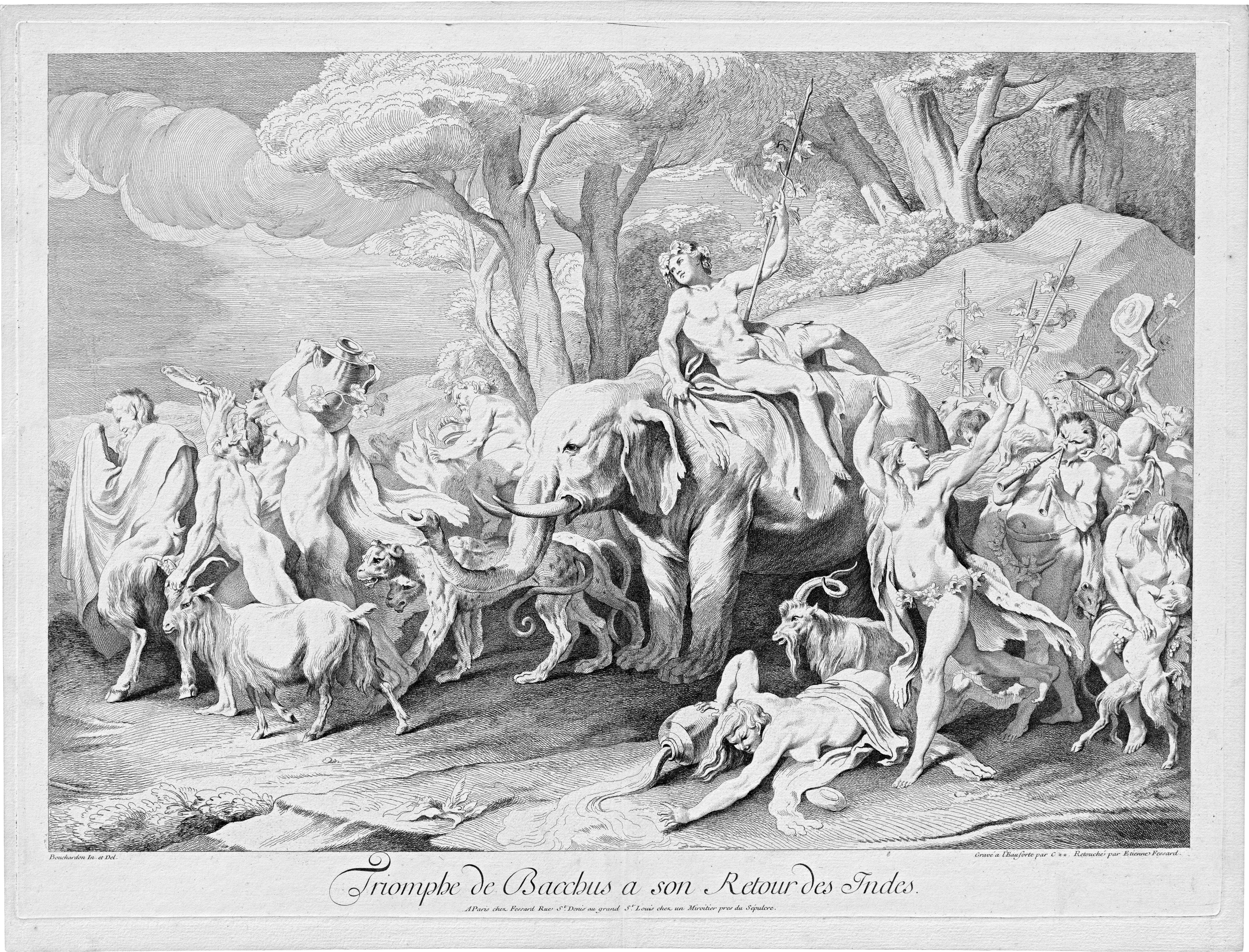Loading the page ...
Comte de Caylus, Anne-Claude-Philippe de Tubières
(1692–1765, Paris)
and Étienne Fessard. Le Triomphe de Bacchus a son Retour des Indes. Etching after Edme Bouchardon. 45.8 x 61.8 cm. Inventaire du Fonds Français (Fessard) 17. Exhibition catalogue Edme Bouchardon (1698–1762): une idée du beau, edited by Anne-Lise Desmas, Édouard Kopp et al., Paris 2016, no. 183.
The youthful Bacchus sits perched on an elephant accompanied by satyrs, nymphs and animals which are dancing and playing musical instruments. The exotic animal is a reference to the return journey from India that Bacchus has just undertaken. Together with its companion piece, the Triumph of Amphitrite (Inventaire du Fonds Français 18, Fessard), it is one of the four largest prints after drawings by Bouchardon.
Anne-Claude-Philippe de Tubières, Comte de Caylus was an antiquarian bookseller, writer, collector and etcher who in 1731 was accorded the status of an amateur member of the Académie Royale de Peinture et de Sculpture. The address states that the etching was reworked with a burin and issued by the Parisian engraver and publisher, Étienne Fessard (1714–1777, Paris). Edme Bouchardon is now regarded as one of the most creative and versatile 18th century French artists and above all as an outstanding forerunner of Neoclassicism. Trained by the sculptor, Guillaume Coustou the Younger, Bouchardon was awarded the coveted Prix de Rome in 1722 and spent the next ten years in the Eternal City, where he devoted most of his time to producing portrait busts and marble replicas of ancient statues. Having returned to Paris, he was made a member of the Académie royale and was also appointed court sculptor to Louis XV. In addition to his activities as a sculptor Bouchardon was a brilliant draughtsman who supplied designs for various kinds of artwork, including medals, gravestones and prints.
The superb, animated composition of the Bacchanalian procession, Bouchardon’s elegantly drawn figures and Caylus’ sophisticated etching technique are the distinguishing features of the sheet. A very fine impression with margins around the distinct platemark. Minor ageing, otherwise in mint condition.
Contact us for further information